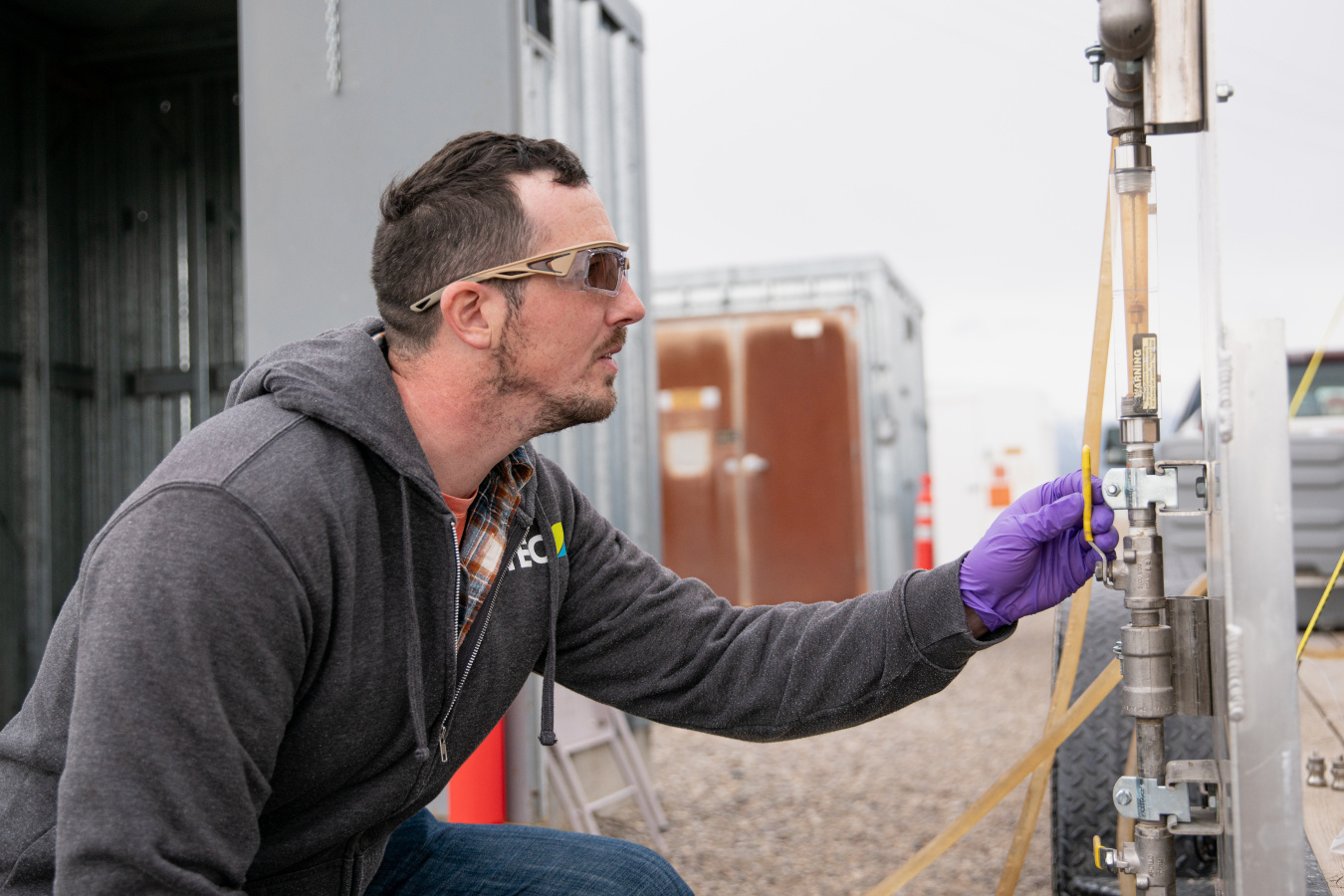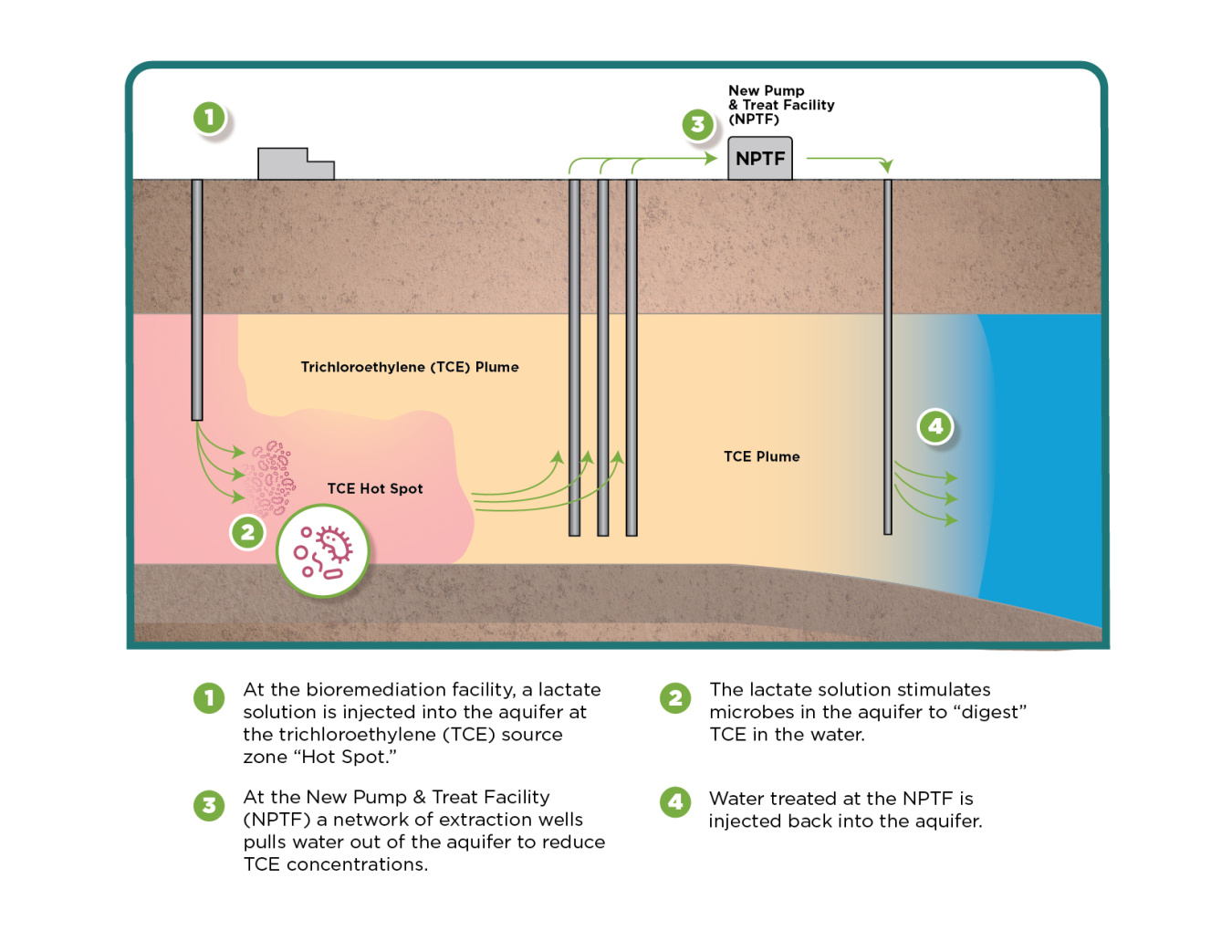A groundwater treatment well installed by Idaho Cleanup Project crews four years ago to contribute to an important remediation project is preserving the quality of the underlying Snake River Plain Aquifer. August 19, 2025
Office of Environmental Management
August 19, 2025Idaho Cleanup Project crews, including Technical and Groundwater Lead Eric Traub, pictured, are supporting a groundwater remediation project to reduce contaminant concentrations and protect the Snake River Plain Aquifer.
IDAHO FALLS, Idaho — A groundwater treatment well installed by Idaho Cleanup Project (ICP) crews four years ago to contribute to an important remediation project is preserving the quality of the underlying Snake River Plain Aquifer.
The well was installed to support two existing groundwater treatment wells at Test Area North (TAN), located on the Idaho National Laboratory (INL) Site, and is positioned to treat a specific source area of a contamination plume located directly below the facility.
The ICP groundwater remediation project is part of the mission of the U.S. Department of Energy Office of Environmental Management — the largest environmental cleanup program in the world — to address the environmental legacy of past nuclear weapons programs and nuclear energy research.
The TAN wells facilitate groundwater treatment by injecting an organic sodium lactate and fatty acid solution into the aquifer, which stimulates naturally occurring microorganisms to break down and reduce the concentration of contaminants in the water.
Before 2021, the source area in question was not responding to treatments through the two existing wells. The third injection well is helping provide treatment to a larger area, ensuring that the treatment solution reaches portions of the source area not previously reached by prior injections.
The area of focus has high concentrations of trichloroethylene (TCE), which was historically used as an industrial solvent at TAN. Constructed in the 1950s, TAN hosted the Aircraft Nuclear Propulsion program. After 1961, the facility was used for additional nuclear reactor research.
Technical and Groundwater Lead Eric Traub with ICP contractor Idaho Environmental Coalition was encouraged by results of the treatment with the addition of the third injection well. He also recognized that the impact to the groundwater won’t be immediate.
“While it will take some time to determine if the injected solution at this well is reaching the entirety of the source area, we have seen a decrease in TCE concentrations in the downgradient of the injection area.”
Due to complex subsurface geology, complete reduction of the plume will occur over time, but ICP crews regularly monitor groundwater to ensure the treatment is effective in decreasing contaminant concentrations and that the plume is not expanding.
Groundwater on the INL Site is frequently monitored and does not leave INL Site boundaries above drinking water standards or create a risk to the public.
Since 2002, EM has also deployed the use of an above-ground treatment unit called the New Pump and Treat Facility. This facility uses a network of extraction wells to move water from the aquifer to the facility, where a technology known as an air stripper removes contaminants by evaporation. Treated water that meets regulatory standards is then reinjected into the aquifer.
The plume originated from common waste disposal practices of the past, like injecting hazardous wastewater directly into the underlying aquifer, and is the subject of a 1990 Comprehensive Environmental Response Compensation and Liability Act cleanup record of decision regulated by the U.S. Environmental Protection Agency and state of Idaho. The actions outlined in the record of decision address the plume and will improve the quality of the aquifer.
-Contributor: Carter Harrison
To receive the latest news and updates about the Office of Environmental Management, submit your e-mail address.



